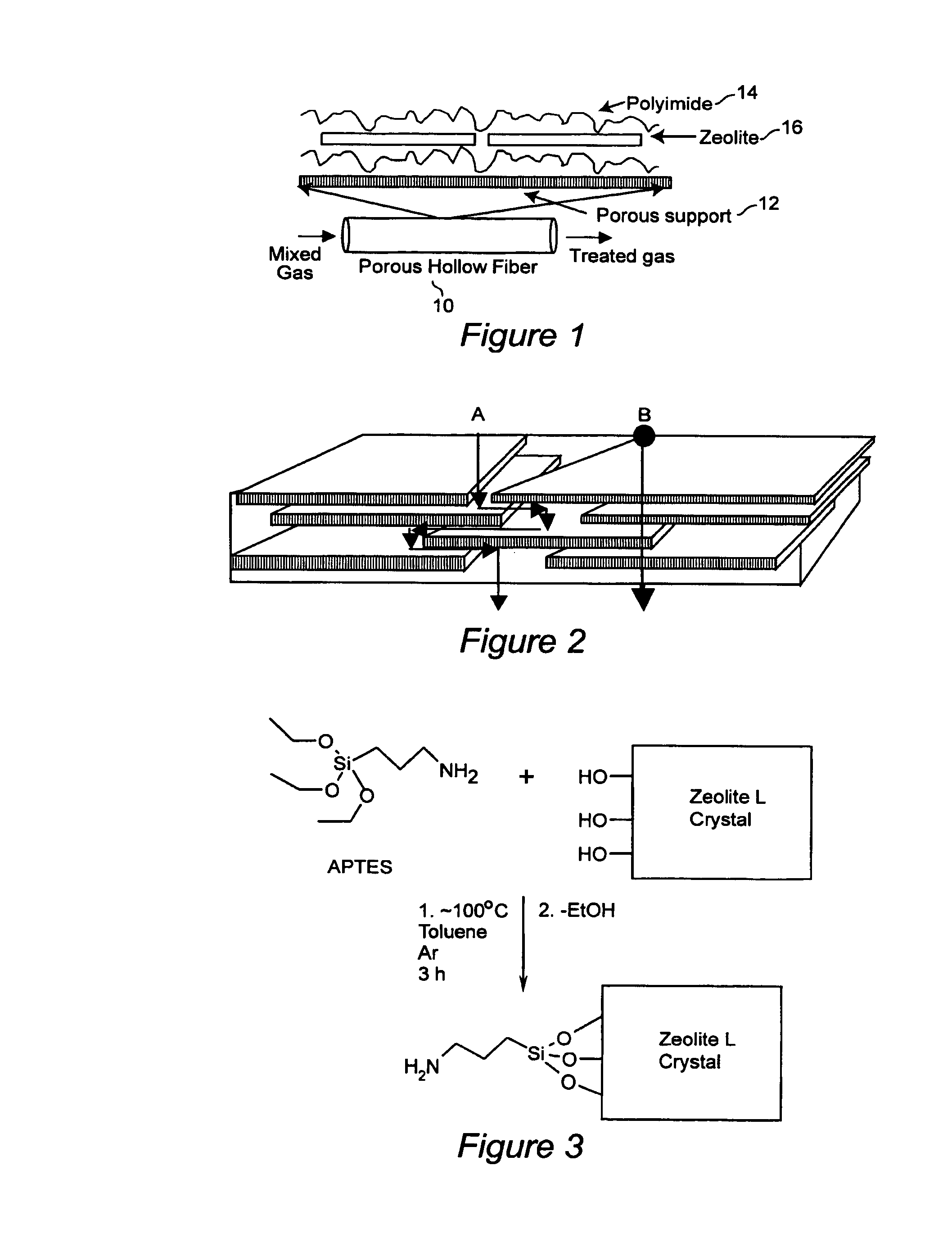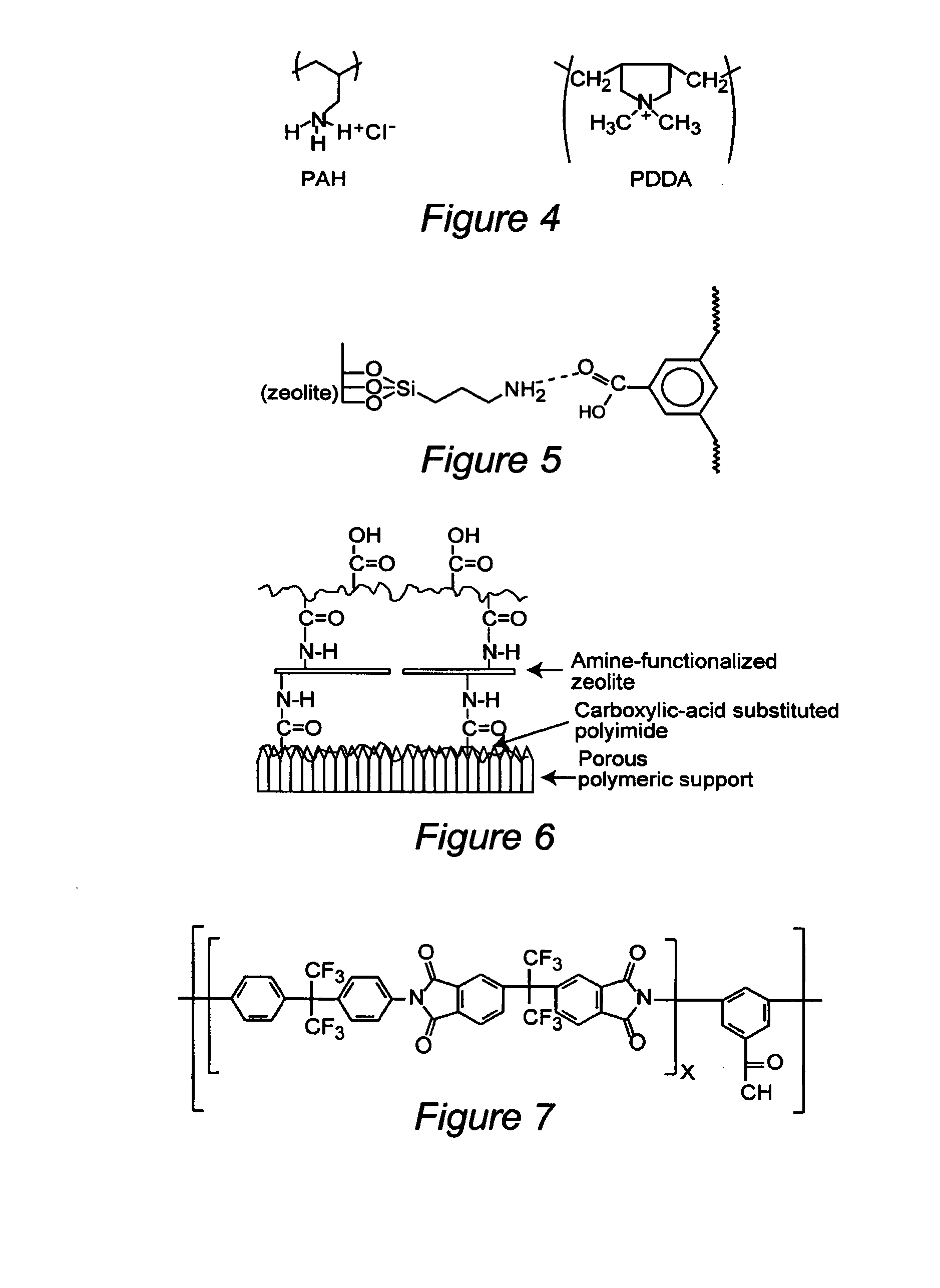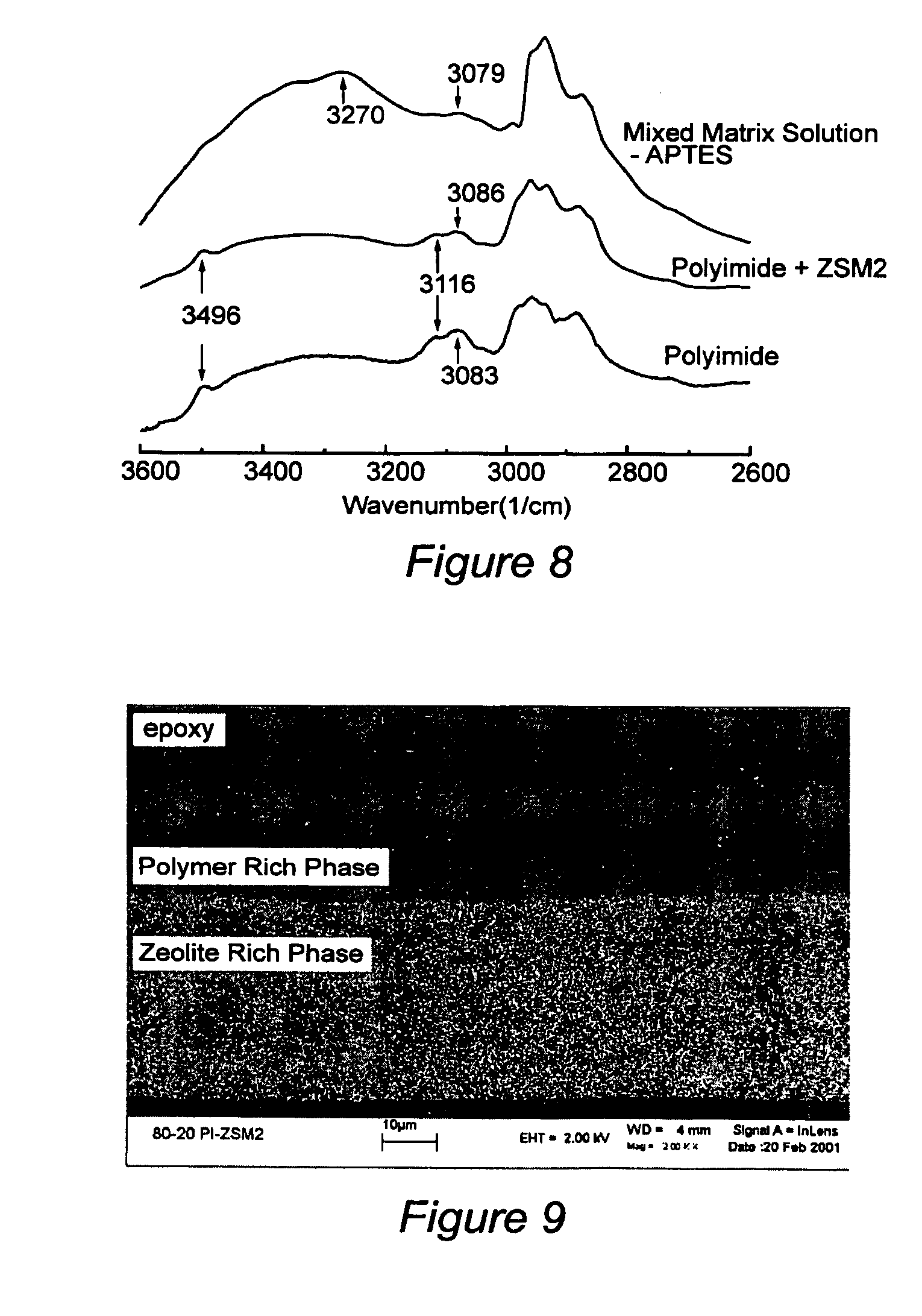Mixed matrix membranes
a polymer matrix and membrane technology, applied in the field of membrane materials and systems, can solve the problems of limited membrane performance, difficult to fabricate into large areas, and difficult to meet large-scale applications, and achieve the effects of promoting interaction with the polymer matrix, reducing defects, and reducing manufacturing costs
- Summary
- Abstract
- Description
- Claims
- Application Information
AI Technical Summary
Benefits of technology
Problems solved by technology
Method used
Image
Examples
example
[0090]Mixed Matrix membranes of 6FDA-6FpDA-DABA, a glassy polyimide, and modified zeolites (ZSM-2) were successfully fabricated using the procedure outlined in this paper. The membranes were cast from solution, and then exposed to different gases for the purpose of determining and comparing the diffusivity coefficients, the solubility coefficients, and the permeation rates of He, O2, N2, CH4 and CO2 of the pure polyimide and the composite membrane.
[0091]FTIR spectra were collected from the pure polyimide, the polyimide and untethered zeolite solutions, and the mixed matrix membrane (MMM) solution. Comparison of the spectra revealed the presence of hydrogen bonding in the MMM solution not present in the other samples. FESEM images and TEM images did not reveal the presence of voids between the polymer and the zeolite. These images also revealed that when given ample time for the solvent to evaporate, the zeolites sediment to one side of the membrane. This develops a polymer rich phas...
PUM
| Property | Measurement | Unit |
|---|---|---|
| diameter | aaaaa | aaaaa |
| diameter | aaaaa | aaaaa |
| temperature | aaaaa | aaaaa |
Abstract
Description
Claims
Application Information
 Login to View More
Login to View More - R&D
- Intellectual Property
- Life Sciences
- Materials
- Tech Scout
- Unparalleled Data Quality
- Higher Quality Content
- 60% Fewer Hallucinations
Browse by: Latest US Patents, China's latest patents, Technical Efficacy Thesaurus, Application Domain, Technology Topic, Popular Technical Reports.
© 2025 PatSnap. All rights reserved.Legal|Privacy policy|Modern Slavery Act Transparency Statement|Sitemap|About US| Contact US: help@patsnap.com



